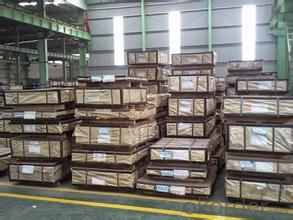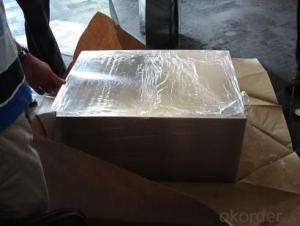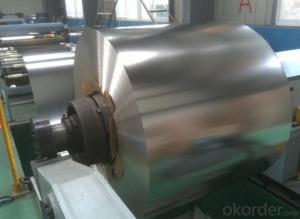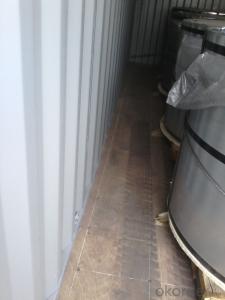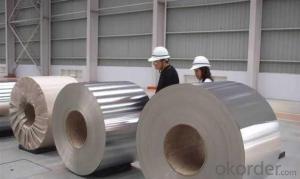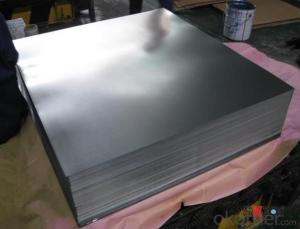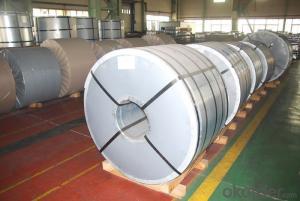Of High Quality ETP sheets coils
- Loading Port:
- China Main Port
- Payment Terms:
- TT OR LC
- Min Order Qty:
- -
- Supply Capability:
- -
OKorder Service Pledge
OKorder Financial Service
You Might Also Like
Electrolytic Tinplate undoubtedly enjoys the pride of place as a packaging medium especially for food. It owes its unique position to its "nine layer sandwich structure", each of which contributes to its eminence as a packing material. The steel base provides the necessary strength and formability for can fabrication. The tin-iron alloy layer provides the bond between the steel and free tin layer. The free tin layer is not only responsible for the attractive bright finish and ease of solderability but is also non-toxic- a factor of vital importance in food packaging!
Electrolytic TinPlate: Composition
E.T.P. consists of five layers each of which performs a different role:
1. Steel Base: Provides stiffness to the material due to its thickness and mechanical strength. Its chemical composition imparts special properties to resist corrosion.
2. Iron-Tin Alloy: This is made up by the inter-metallic compound Fe-Sn2. Due to its electrochemical characteristics, it acts as a barrier against corrosion. For effective action, its continuity is more important than its quantity.
3. Metallic Tin: Tin has many advantages which have turned it into the most important element to protect steel used for cans; in many foods, it acts as a simple barrier against corrosion, improves weldability, it is an excellent base for lithographic printing and for applying lacquers. In tin-robbing foods, it acts as a sacrificial element.
4. Passivation Film: According to its nature, it makes it possible to improve the E.T.P.’s resistance to sulphiding, oxidation and rust. It is also a conditioner to improve the adherence of varnishes, inks, lacquers etc.
5. Oil Film: Protects the sheet from the humidity in the environment and makes easy to handle. It is applied using an electrostatic oiler on both sides of the sheet.
- Q: How does tinplate handle exposure to extreme temperatures?
- Tinplate generally handles exposure to extreme temperatures quite well. It has a high melting point and can withstand high temperatures without deforming or losing its structural integrity. Additionally, tinplate has good thermal conductivity, allowing it to dissipate heat quickly. However, prolonged exposure to extremely high temperatures may cause some oxidation or discoloration on the tin coating. Overall, tinplate is a reliable material for various applications in extreme temperature conditions.
- Q: How does tinplate contribute to the safety of automotive components?
- Tinplate contributes to the safety of automotive components in several ways. Firstly, tinplate is highly resistant to corrosion, which helps protect automotive components from rust and deterioration. This ensures that critical parts, such as brake lines or fuel tanks, remain in good condition, reducing the risk of failure and potential accidents. Additionally, tinplate's strength and durability make it suitable for impact-sensitive components, like car body panels or engine parts, providing an extra layer of protection in case of collisions. Lastly, tinplate's ability to withstand high temperatures and its fire resistance properties make it an ideal material for automotive components that may be exposed to extreme heat or fire hazards, further enhancing safety in the event of accidents or emergencies.
- Q: What are the typical lead times for tinplate production?
- The typical lead times for tinplate production can vary depending on factors such as the quantity required, complexity of the design, and the manufacturer's production capacity. However, on average, lead times for tinplate production usually range from several weeks to a few months.
- Q: What do tinplate do?
- Material to distinguish between SR (Pu Tongcai) and DR (two rolled material)Annealing is distinguished by CA (continuous annealing), BA (bell annealing), different annealing, and different hardness. Corresponding to different processing properties.
- Q: Should vacuum filling be required for tinplate meat filling?
- Mainly depends on your production process needs
- Q: Can tinplate be used for packaging electronic components?
- Yes, tinplate can be used for packaging electronic components. Tinplate is a material made from thin sheets of steel coated with a layer of tin, which provides excellent corrosion resistance and electrical conductivity. It is commonly used in the packaging industry for various applications, including packaging electronic components. The tin coating protects the components from moisture and other environmental factors, ensuring their safety and longevity. Additionally, tinplate offers good formability, making it suitable for creating customized packaging shapes to accommodate different electronic components.
- Q: What are the main applications of tinplate in the pet care industry?
- Tinplate is commonly used in the pet care industry for packaging various products such as pet food, treats, and supplements. The main applications of tinplate in this industry include preserving the quality and freshness of pet food, ensuring product safety, and enhancing the overall visual appeal of the packaging.
- Q: Can tinplate be used for energy storage applications?
- Yes, tinplate can be used for energy storage applications. Tinplate, which is a thin steel sheet coated with a layer of tin, offers good corrosion resistance and durability, making it suitable for various energy storage purposes. It can be used in the construction of batteries, capacitors, and other energy storage devices. Additionally, tinplate's ability to maintain airtightness and prevent moisture penetration makes it a reliable choice for storing and preserving energy.
- Q: How does tinplate perform in terms of electrical conductivity?
- Tinplate has relatively low electrical conductivity compared to other metals, making it less suitable for applications that require high conductivity such as electrical wiring.
- Q: How do you paint the tinplate?
- Spray paint. The zygote to be painted is placed on a shelf or plane or hung up and sprayed with a spray gun. Use a small air compressor and spray gun
Send your message to us
Of High Quality ETP sheets coils
- Loading Port:
- China Main Port
- Payment Terms:
- TT OR LC
- Min Order Qty:
- -
- Supply Capability:
- -
OKorder Service Pledge
OKorder Financial Service
Similar products
Hot products
Hot Searches
Related keywords




